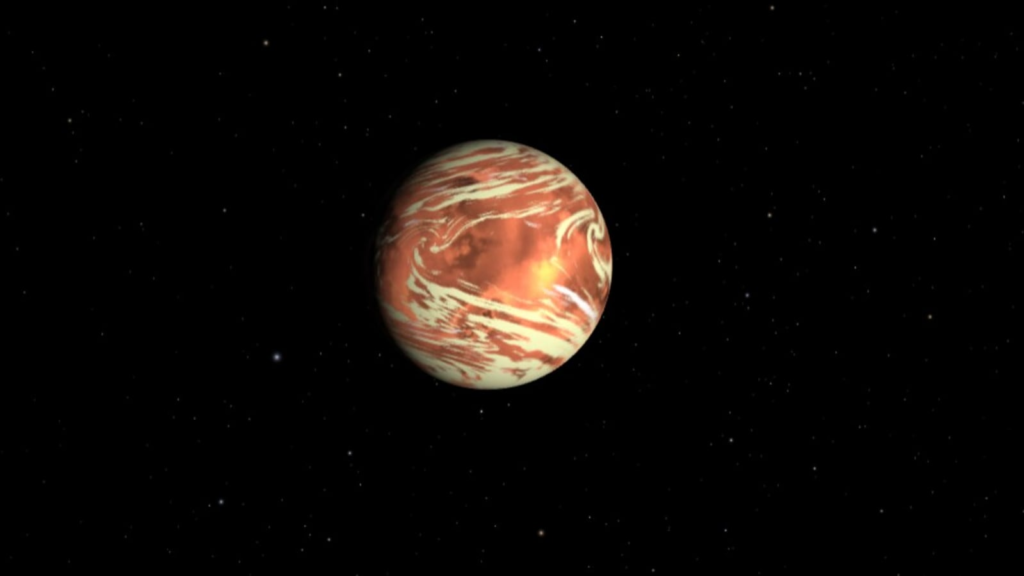In a potential landmark discovery, scientists obtained what they call the strongest signs yet of possible life beyond our solar system. They used the James Webb Space Telescope to study the atmosphere of a planet called K2-18b and detected signs of molecules which on Earth are only produced by simple organisms.
The two gases found — dimethyl sulfide, or DMS, and dimethyl disulfide, or DMDS — are said to be generated on Earth by living organisms, primarily microbial life such as marine phytoplankton – algae, Reuters reported.
“This suggests the planet may be teeming with microbial life,” the researchers were quoted as saying.
This is a new but tentative evidence. Researchers emphasised they are not announcing the discovery of actual living organisms (alien life) but rather a possible biosignature – an indicator of a biological process.
They said that the findings should be viewed cautiously. The team and independent astronomers stressed that more data is needed to confirm these results.
‘Strongest evidence yet’
The lead researcher, Professor Nikku Madhusudhan, told the BBC at his lab at Cambridge University’s Institute of Astronomy that he hopes to obtain the clinching evidence soon.
“This is the strongest evidence yet there is possibly life out there. I can realistically say that we can confirm this signal within one to two years,” Madhusudhan said.
Prof Madhusudhan said, “If we confirm that there is life on k2-18b, it should basically confirm that life is very common in the galaxy”. There are lots of “ifs” and “buts” at this stage, Prof Madhusudhan’s team said.
K2-18 b planet
The James Webb Space Telescope made observations of the planet named K2-18 b, that is located about 124 light-years from Earth. It is 8.6 times the mass of Earth.
The planet was discovered in 2015.
According to the NASA, “K2-18 b is a super Earth exoplanet that orbits an M-type star. Its mass is 8.92 Earths, it takes 32.9 days to complete one orbit of its star, and is 0.1429 AU from its star. Its discovery was announced in 2015.”
This is the second, and more promising, time when chemicals associated with life have been detected in the planet’s atmosphere by Nasa’s James Webb Space Telescope.
In 2023, an investigation with NASA’s James Webb Space Telescope into K2-18 b revealed the presence of carbon-bearing molecules including methane and carbon dioxide.
Webb’s discovery added to recent studies suggesting that K2-18 b could be a Hycean exoplanet, one which has the potential to possess a hydrogen-rich atmosphere and a water ocean-covered surface.
“The only scenario that currently explains all the data obtained so far from JWST [James Webb Space Telescope], including the past and present observations, is one where K2-18 b is a hycean world teeming with life,” Madhusudhan said.
“However, we need to be open and continue exploring other scenarios,” he added.
Chemical as markers of life
DMS and DMDS, both from the same chemical family, have been predicted as important exoplanet biosignatures.
Webb found that one or the other, or possibly both, were present in the planet’s atmosphere at a 99.7% confidence level, meaning there is still a 0.3% chance of the observation being a statistical fluke.
The gases were detected at atmospheric concentrations of more than 10 parts per million by volume.
But scientists think they’ve found evidence of DMS on a comet, meaning that life may not be required for its creation, which casts doubt on the use of the chemical as a marker of life, Space.com reported.
Madhusudhan said, “…we need more theoretical and experimental studies to make sure whether or not there is another abiotic mechanism [one not involving biological processes] to make DMS or DMDS in a planetary atmosphere like that of K2-18 b.”
“Even though previous studies have suggested them [as] robust biosignatures even for K2-18 b, we need to remain open and pursue other possibilities,” he said.
So the findings represent “a big if” on whether the observations are due to life, and it is in “no one’s interest to claim prematurely that we have detected life,” Madhusudhan said.
(With inputs from Reuters)

